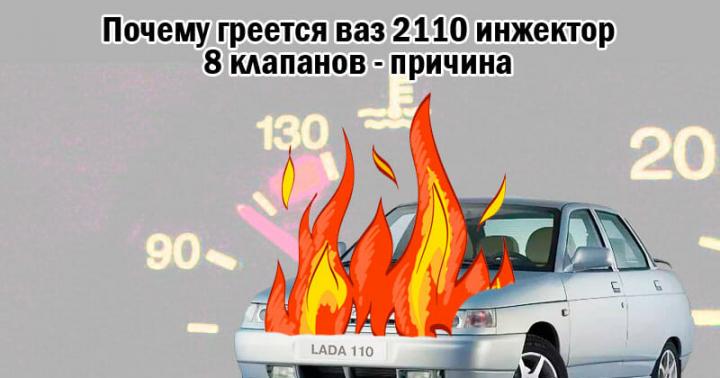3.5. The laws of conservation and change of energy
3.5.1. Law of change full mechanical energy
The change in the total mechanical energy of a system of bodies occurs when the work is done by forces acting both between the bodies of the system and from the side of external bodies.
The change in mechanical energy ∆E of a system of bodies is determined the law of variation of the total mechanical energy:
∆E = E 2 - E 1 = A ext + A tr (res),
where E 1 is the total mechanical energy of the initial state of the system; E 2 - total mechanical energy of the final state of the system; A extern - work performed on the bodies of the system by external forces; A tr (res) is the work performed by the friction (resistance) forces acting inside the system.
Example 30. At a certain height, a body at rest has a potential energy equal to 56 J. By the time it falls to the Earth, the body has a kinetic energy equal to 44 J. Determine the work of the air resistance forces.
Solution. The figure shows two positions of the body: at a certain height (first) and by the time it falls to the Earth (second). The zero level of potential energy is chosen on the surface of the Earth.
The total mechanical energy of a body relative to the Earth's surface is determined by the sum of potential and kinetic energy:
- at some height
E 1 = W p 1 + W k 1;
- by the time of falling to Earth
E 2 = W p 2 + W k 2,
where W p 1 = 56 J - potential energy of the body at a certain height; W k 1 = 0 - kinetic energy of a body at rest at a certain height; W p 2 = 0 J is the potential energy of the body by the time it falls to the Earth; W k 2 = 44 J is the kinetic energy of the body at the moment of falling to the Earth.
We find the work of the air resistance forces from the law of change in the total mechanical energy of a body:
where E 1 = W p 1 - total mechanical energy of the body at a certain height; E 2 = W k 2 - total mechanical energy of the body at the moment of falling to the Earth; A ext = 0 - work of external forces (there are no external forces); A res is the work of the air resistance forces.
The sought work of the air resistance forces is thus determined by the expression
A res = W k 2 - W p 1.
Let's make the calculation:
A res = 44 - 56 = −12 J.
The work of the air resistance forces is negative.
Example 31. Two springs with stiffness factors of 1.0 kN / m and 2.0 kN / m are connected in parallel. What work needs to be done to stretch the spring system by 20 cm?
Solution. The figure shows two springs with different stiffness coefficients connected in parallel.
The external force F → stretching the springs depends on the amount of deformation of the composite spring, therefore, the calculation of the work of the specified force according to the formula for calculating the work of a constant force is invalid.
To calculate the work, we will use the law of change in the total mechanical energy of the system:
E 2 - E 1 = A ext + A res,
where E 1 is the total mechanical energy of the composite spring in the undeformed state; E 2 - total mechanical energy of the deformed spring; A ext - the work of an external force (the required value); A res = 0 - work of resistance forces.
The total mechanical energy of a compound spring is the potential energy of its deformation:
- for an undeformed spring
E 1 = W p 1 = 0,
- for extended spring
E 2 = W p 2 = k total (Δ l) 2 2,
where k total is the general coefficient of stiffness of the composite spring; ∆l is the amount of spring tension.
The total coefficient of stiffness of two springs connected in parallel is the sum
k total = k 1 + k 2,
where k 1 - coefficient of stiffness of the first spring; k 2 - coefficient of stiffness of the second spring.
We find the work of the external force from the law of change in the total mechanical energy of the body:
A ext = E 2 - E 1,
substituting in this expression the formulas that determine E 1 and E 2, as well as the expression for the total coefficient of stiffness of the composite spring:
A ext = k total (Δ l) 2 2 - 0 = (k 1 + k 2) (Δ l) 2 2.
Let's do the calculation:
A ext = (1.0 + 2.0) ⋅ 10 3 ⋅ (20 ⋅ 10 - 2) 2 2 = 60 J.
Example 32. A bullet weighing 10.0 g, flying at a speed of 800 m / s, hits a wall. The modulus of the force of resistance to the movement of the bullet in the wall is constant and amounts to 8.00 kN. Determine how far the bullet will penetrate the wall.
Solution. The figure shows two positions of the bullet: when it approaches the wall (first) and to the moment the bullet stops (gets stuck) in the wall (second).
The total mechanical energy of a bullet is the kinetic energy of its movement:
- when the bullet approaches the wall
E 1 = W k 1 = m v 1 2 2;
- by the time the bullet stops (gets stuck) in the wall
E 2 = W k 2 = m v 2 2 2,
where W k 1 - kinetic energy of the bullet when approaching the wall; W k 2 - kinetic energy of the bullet at the moment of its stopping (getting stuck) in the wall; m is the mass of the bullet; v 1 - bullet velocity module when approaching the wall; v 2 = 0 - the magnitude of the bullet velocity by the time it stops (gets stuck) in the wall.
The distance the bullet will penetrate into the wall can be found from the law of change in the total mechanical energy of the bullet:
E 2 - E 1 = A ext + A res,
where E 1 = m v 1 2 2 is the total mechanical energy of the bullet when approaching the wall; E 2 = 0 is the total mechanical energy of the bullet at the moment of its stopping (getting stuck) in the wall; A ext = 0 - work of external forces (there are no external forces); A res is the work of resistance forces.
The work of the resistance forces is determined by the product:
A res = F res l cos α,
where F res is the modulus of the force of resistance to the movement of the bullet; l is the distance the bullet will penetrate into the wall; α = 180 ° - the angle between the directions of the resistance force and the direction of movement of the bullet.
Thus, the law of change in the total mechanical energy of a bullet is explicitly as follows:
- m v 1 2 2 = F res l cos 180 °.
The sought distance is determined by the ratio
l = - m v 1 2 2 F res cos 180 ° = m v 1 2 2 F res
l = 10.0 ⋅ 10 - 3 ⋅ 800 2 2 ⋅ 8.00 ⋅ 10 3 = 0.40 m = 400 mm.
Solution.
To solve the problem, let us consider the physical system "body - gravitational field of the Earth". The body will be considered a material point, and the Earth's gravitational field - homogeneous. The selected physical system is not closed, since during body movement interacts with air.
If we do not take into account the buoyancy force acting on the body from the air side, then the change in the total mechanical energy of the system is equal to the work of the air resistance force, i.e.∆ E = A c.
We choose the zero level of potential energy on the surface of the Earth. The only external force in relation to the "body - Earth" system is the air resistance force directed vertically upward. Initial energy of the system E 1, final E 2.
Resistance force work A.
Because the angle between the drag force and the displacement is 180 °, then the cosine is -1, so A = - F c h. Let us equate A.
The considered open physical system can also be described by the theorem from the change in the kinetic energy of a system of interacting objects, according to which the change in the kinetic energy of the system is equal to the work done by external and internal forces during its transition from the initial state to the final state. If you do not take into account the buoyancy force acting on the body from the air side, and the internal one - the force of gravity. Hence∆ E к = A 1 + A 2, where A 1 = mgh - the work of gravity, A 2 = F c hcos 180 ° = - F c h - the work of the resistance force;∆ E = E 2 - E 1.
All components of air resistance are difficult to determine analytically. Therefore, an empirical formula has found application in practice, which has the following form for the range of speeds characteristic of a real car:
where with NS - dimensionless air stream ratio depending on the shape of the body; ρ in - air density ρ in = 1.202 ... 1.225 kg / m 3; A- the area of the mid-section (area of the transverse projection) of the car, m 2; V- vehicle speed, m / s.
The literature contains air resistance coefficient k v :
F v = k v AV 2 , where k v = with NS ρ v /2 , - coefficient of air resistance, Ns 2 / m 4.
…and streamlining factorq v : q v = k v · A.
If instead of with NS substitute with z, then we get the aerodynamic lift.
Mid-section area for a car:
A = 0.9 B max · H,
where V max is the greatest track of the vehicle, m; H- vehicle height, m.
Force is applied in the metacentre, and moments are created.
Air flow resistance speed taking into account wind:
 , where β is the angle between the directions of the vehicle and the wind.
, where β is the angle between the directions of the vehicle and the wind.
WITH NS some cars
|
VAZ 2101 ... 07 |
Оpel astra Sedan | |||
|
VAZ 2108 ... 15 | ||||
|
Land rover free lander | ||||
|
VAZ 2102 ... 04 | ||||
|
VAZ 2121 ... 214 | ||||
|
truck | ||||
|
truck with trailer |
Lift resistance force
F NS = G a sin α.
In road practice, the slope is usually estimated by the amount of lift of the road bed, related to the value of the horizontal projection of the road, i.e. tangent of an angle, and denote i, expressing the resulting value as a percentage. With a relatively small value of the slope, it is permissible in the calculation formulas to use not sinα., and the quantity i in relative values. For large values of the slope, the replacement sinα by the magnitude of the tangent ( i/100) unacceptable.
Acceleration resistance force
When the car accelerates, the progressively moving mass of the car accelerates and the rotating masses accelerate, which increase the resistance to acceleration. This increase can be taken into account in the calculations if we assume that the car's masses are moving translationally, but using a certain equivalent mass m uh, a little more m a (in classical mechanics, this is expressed by the Koenig equation)
We use the N.E. Zhukovsky, equating the kinetic energy of the translationally moving equivalent mass to the sum of energies:
 ,
,
where J d- moment of inertia of the engine flywheel and related parts, N · s 2 · m (kg · m 2); ω d- the angular speed of the engine, rad / s; J To- moment of inertia of one wheel.
Since ω k = V a / r k , ω d = V a · i kp · i o / r k , r k = r k 0 ,
we get  .
.
Moment of inertiaJvehicle transmission units, kg m 2
|
Automobile |
Flywheel with crankshaft J d |
Driven wheels (2 wheels with brake drums), J k1 |
Driving wheels (2 wheels with brake drums and semi-axles) J k2 |
Let's make a replacement: m NS = m a · δ,
If the vehicle is not fully loaded:  .
.
If the car is coasting: δ = 1 + δ 2
Resistance force to vehicle acceleration (inertia): F and = m NS · a a = δ · m a · a a .
As a first approximation, we can take: δ = 1,04+0,04 i kp 2




